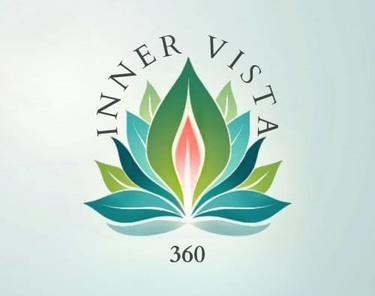Why Slow Breathing Matters for Holistic Health


Breathing, a process of inhaling and exhaling is crucial to sustain one's life. The process which seems too simple to be rightfully practiced has components which can surely work on the betterment of mind,body and soul. Not just this but slow breathing on which we hardly focus has ancient roots specifically in Eastern traditions like pranayama in yoga. Western interest has grown since the 19th century due to increased focus on holistic health. The Buteyko method, which was created in Russia, treated respiratory disorders like asthma by using controlled breathing.
The Calm Rhythms: A Re-examination of Breathing Rates
The physiological effects of mindful breathing are informed by a comprehensive study of the research on breathing rates between 4 and 10 breaths per minute (bpm). Studies using meditation, CPAP, and other interventions were not included for the purpose of a targeted analysis. Instead, the study concentrates on physiological measurements from healthy people, providing information about the normal breathing patterns and general health.
Using Slow Breathing to Optimize Respiratory Function
The respiratory system, particularly tidal breathing and diaphragmatic function, is greatly impacted by slow breathing strategies. By increasing the tidal volume, diaphragmatic activation facilitates more efficient gas exchange. Delays in breathing have been linked to increased diaphragm excursion, which suggests better diaphragmatic function, according to MRI studies. While reducing dead space and chemoreflex sensitivity (response to changes in CO₂ and O₂), slower breathing rates improve alveolar ventilation and oxygen saturation. People may be able to enhance their respiratory function and overall physiological health by optimizing their breathing habits.
Advantages of Slow Breathing for the Heart
The heart is greatly affected by slow breathing, particularly the hemodynamics.
Slow breathing enhances the cardiac output and stroke volume through the increase of venous return, which ultimately enhances cardiovascular efficiency. The relevance of this rate of breathing is evidenced by the interesting fact that heart rhythms and blood pressure pulses correspond to the rate of approximately six breaths per minute. Furthermore, slow breathing at, in particular, 6 breaths per minute enhances heart rate variability (HRV), decreases blood pressure, and enhances cardiorespiratory coupling. These effects tend to decrease heart strain and promote cardiovascular health.
Heart and Breath Harmony: Cardiorespiratory Coupling
Coordination of heart rate and breathing, or cardiorespiratory coupling, is critical for cardiovascular function. Heart rate variability (HRV) power spectrum analysis reveals low-frequency (LF) oscillations reflecting baroreflex activity and sympathetic tone, and high-frequency (HF) oscillations indicating respiratory effect.
Interestingly, at 6 breaths per minute, baroreflex sensitivity is amplified, elevating blood pressure control. In addition, the "resonant frequency" of Respiratory Sinus Arrhythmia (RSA), in which there is an increase in heart rate with inhalation and a decrease with exhalation, is optimized at 6 breaths per minute. This underscores the importance of optimal breathing rhythms for overall cardiovascular well-being by increasing gas exchange, cardiac efficiency, and potentially even energy savings.
Autonomic Balance through Relaxed Breathing:
The autonomic nervous system is greatly influenced by slow breathing, which is tipped toward parasympathetic dominance. Slow breathing enhances parasympathetic (vagal) activity, which elevates vagal tone and enhances autonomic balance and stress resolution. Sympathetic bursts are not necessarily reduced but are phase-shifted with respect to breathing patterns. A key measure of sympathovagal balance is heart rate variability (HRV), with the LF/HF ratio indicating that slow, deep breathing facilitates optimal autonomic function. Slow breathing increases autonomic homeostasis, decreases stress, and enhances overall well-being by favoring parasympathetic dominance.
The processes involved in respiratory sinus arrhythmia are being demystified:
Respiratory Sinus Arrhythmia (RSA) causes are complicated and still debatable. Two broad concepts suggest RSA is initiated by central neuronal pacemakers located in the medulla oblongata or by the baroreflex, which senses blood pressure changes. However, RSA is likely to be the product of a synergistic relationship of cerebral, peripheral, and mechanical factors. The "respiratory gate" model proposes that rhythmic autonomic gating in phase with breathing phases is a significant role. This complex interaction underscores the important role that RSA plays in maintaining physiological homeostasis by pointing to the complicated interconnections that are present among breathing, autonomic functioning, and cardiovascular regulation.
The Physiological Benefits of Slow Breathing: Unlocking Their Power
There are major impacts on physiological function from slow breathing, particularly when in the range of 6 to 10 breaths per minute. Slow breathing can potentially optimize heart rate variability (HRV) and baroreflex sensitivity, enhance autonomic function, and augment ventilation efficiency when combined with diaphragmatic activation and augmented tidal volume. Improved cardiovascular stability and stress resistance could be a consequence of these benefits. The researchers say the best breathing rhythm could be what they term as "*autonomically optimised respiration*", highlighting how slow breathing enhances overall health and wellbeing.
Applying Slow Breathing to Its Potential:
In short, slow breathing has a considerable impact on a range of bodily systems and is a useful but wasted technique. Its benefits encompass wellbeing, overall health, and potentially even surgery. Future studies should investigate the long-term effects of slow breathing and identify what perfect respiration is like in healthy individuals and individuals with various diseases to truly tap into its potential. More research in this area will unlock new avenues for optimizing health and well-being.
